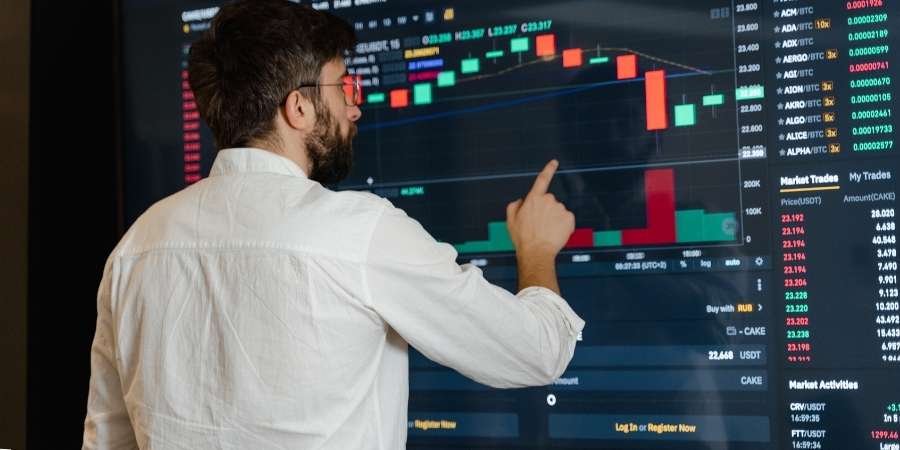Online trading isn’t just a side hustle anymore; it’s becoming the go-to way a new generation invests. With sleek apps and low entry costs, markets once gated by jargon and wealth are now just a tap away. The U.S. online trading platform market is set to grow from $3.41B in 2025 to $4.63B by 2030, driven by commission-free trades, mobile-first design, and AI tools that simplify decisions. This shift is about more than numbers; it’s a power move. Investing is getting more accessible, and control is landing in the hands of everyday people. This article explores how online trading breaks down barriers, reshapes the game, and gives new investors the tools (and confidence) to participate.
Understanding Commission-Free and Fractional Share Trading
Not long ago, investing was reserved for people with big wallets and financial advisors on speed dial. However, that’s changing, and fast. That’s not the case anymore, thanks to technological advancements and two major shifts: commission-free trading and fractional shares.
Trading used to be pretty inconvenient, especially if you didn’t have a lot of capital. Why? You had to learn how to trade and consider all the risks involved, plus extra fees. They might not seem like much initially, but they eat into your trades, often discouraging new investors and traders. Currently, most platforms have stripped out those fees, letting new investors get in without worrying about whether the trade cost will cancel the profit. No more $10 charges just to buy or sell a few shares. Now, it’s smooth, simple, and free. This is essentially what commission-free trading is.
Then there’s fractional share trading. This one is a game-changer. Some years ago, if you wanted to own a piece of a big-name stock like Apple, you’d need hundreds (sometimes thousands) of dollars. But now, you can start with just a few bucks. Want $5 worth of Apple stock? Done. That access allows younger investors, or anyone with limited capital, to enter the market without waiting until they “have enough.”
If you think about it, you get more than just convenience; you get control. These tools open the door to financial independence for a new crowd. People previously priced out or intimidated by traditional investing are now building portfolios on their terms, at their own pace.
Mobile Trading Is Winning Over New-Age Investors
The reality is that most people in the newer generations of investors and traders aren’t sitting at a desk refreshing charts all day. For this reason, mobile trading has become the go-to, not the backup. It matches the pace of real life, and that’s precisely why it’s taken off with younger, tech-driven investors.
It makes sense. Think about it. It doesn’t matter whether you’re commuting, in line for coffee, or scrolling in bed at 1 a.m., your trading platform is right there with you. That is where reliable tools like MT4 trading shine because they meet the needs of this new wave of investors with real-time data, sleek layouts, and tools that don’t need hours of tutorials to figure out.
So, in short, mobile trading isn’t a nice bonus anymore; it’s how people expect to engage with the market.
Here are some reasons it works so well:
- Instant Access: Open, trade, or close a position in seconds (anytime, anywhere).
- Clean Interfaces: No clutter. No distractions. Just tools that make sense.
- Real-Time Data: Price moves, market shifts, and news, delivered live.
- Confidence Boost: Simple, practical tools lower the barrier to entry and keep users engaged.
Mobile trading makes investing part of your daily rhythm. There are no excuses, no waiting for the “perfect” setup, no putting it off. You’re in when you want to be. Plus, with more investors demanding speed, flexibility, and the freedom to trade on their terms, mobile is no longer optional; it’s essential.
Community-Driven Investment Strategies
One of the most underrated perks of online trading is how collaborative it can be. Social and copy trading platforms let you follow experienced traders, copy their moves, and learn in real time. It’s a clever way for beginners to build skills and confidence, without flying blind.
But it’s not just about copying trades. Most platforms today come with built-in communities, even the ones focused on analysis. These are real spaces where people break down strategies, share what’s working, ask questions, and help each other grow. It’s like having a group chat that trades smarter than you, and you’re invited in.
This isn’t just theory. It’s real-world learning, powered by people in the market with you. And that kind of environment makes a considerable difference when starting.
AI and Robo-Advisors
This might sound strange to experienced investors, but not everyone has the time (or the interest) to study markets, read charts, or stay glued to financial news, especially if you’re trading as a side hustle on top of a hectic 9-to-5. That’s where AI and robo-advisors come in. These tools give online investors serious power by simplifying investment decisions and streamlining the process.
Most online trading platforms now include some form of AI-driven feature, whether analyzing massive amounts of data or executing trades automatically through algorithmic trading systems. The space is seeing major growth in AI-powered tools that track market data in real time, spot patterns, and forecast trends faster than any human ever could. Resulting in smarter recommendations, quicker reactions, and fewer emotional decisions.
Robo-advisors take things even further. They handle everything from building your portfolio to rebalancing it completely automatically. You set your goals and risk level, and the system handles the rest. For beginners, this removes all the guesswork. For intermediates, it adds structure, guidance, and consistency.
It’s basically like having a financial assistant who never sleeps and misses a move.
What This Means for the Next Wave of Investors
Online trading isn’t just changing how people invest; it’s changing who gets to invest. With commission-free trading, mobile apps, AI, and social platforms, the doors open for anyone ready to step in. You don’t need to be rich, experienced, or sitting in front of a Bloomberg terminal. You just need access, and now, access is everywhere.



